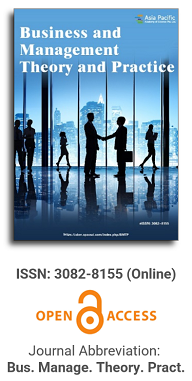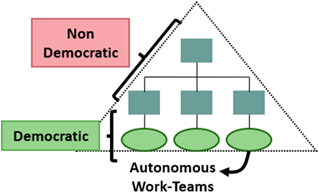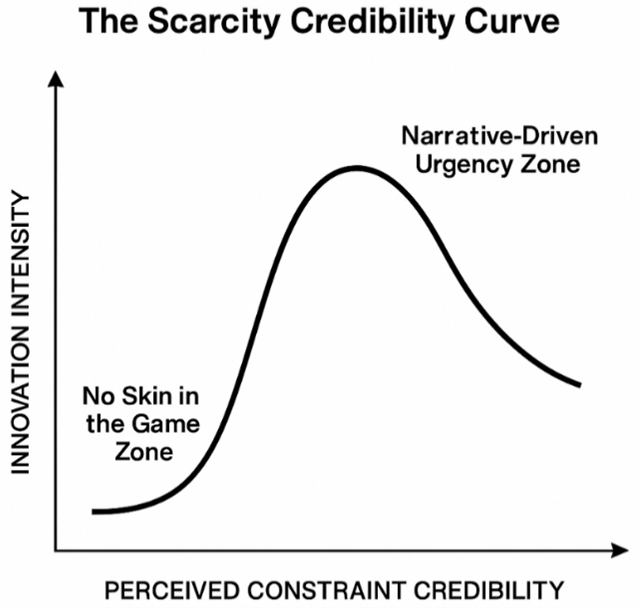
Asia Pacific Academy of Science Pte. Ltd. (APACSCI) specializes in international journal publishing. APACSCI adopts the open access publishing model and provides an important communication bridge for academic groups whose interest fields include engineering, technology, medicine, computer, mathematics, agriculture and forestry, and environment.


Exploring consumer purchasing behavior: Business insights for precision marketing
Vol 2, Issue 2, 2025
Download PDF
Abstract
Understanding consumer purchasing behavior is crucial for businesses aiming to enhance customer engagement and optimize marketing strategies. In today’s digital economy, traditional marketing approaches are becoming less effective due to evolving consumer behaviors, the rise of online communities, and the widespread use of ad-blocking software. To remain competitive, businesses must adopt data-driven strategies to analyze consumer preferences and tailor their marketing efforts accordingly. Machine learning provides a powerful tool for predicting consumer purchasing behavior, enabling businesses to anticipate customer needs and implement targeted marketing campaigns. Previous studies have demonstrated the effectiveness of machine learning in consumer analysis, particularly in customer segmentation and purchase prediction. However, while much research focuses on technical model optimization, relatively few studies have applied machine learning specifically for marketing prediction and strategic decision-making. This study addresses that gap by leveraging machine learning to analyze consumer purchasing behavior and generate practical insights for marketing strategies and business applications. Using a dataset of 4680 transactions, we employ Generalized Linear Models (GLM), Logistic Regression, Random Forest, and XGBoost to predict repurchase behavior within a specified timeframe. Our objective is to provide practical implications for businesses, such as improving targeted promotions, refining customer segmentation, and enhancing demand forecasting.
Keywords
References
1. Taiwan Network Information Center. 2018 Taiwan Internet Report. Taiwan Network Information Center; 2019.
2. Li J, Pan S, Huang L, Zhu X. A Machine Learning Based Method for Customer Behavior Prediction. Tehnički vjesnik. 2019; 26(6): 1774–1781. doi: 10.17559/tv-20190603165825
3. Oster E. Diabetes and Diet: Purchasing Behavior Change in Response to Health Information. American Economic Journal: Applied Economics. 2018; 10(4): 308–348. doi: 10.1257/APP.20160232
4. Malthouse EC, Blattberg RC. Can we predict customer lifetime value. Journal of Interactive Marketing. 2005; 19(1): 2–16.
5. Kahan R. Using database marketing techniques to enhance your one‐to‐one marketing initiatives. Journal of Consumer Marketing. 1998; 15(5): 491–493.
6. Miglautsch JR. Thoughts on RFM scoring. Journal of Database Marketing & Customer Strategy Management. 2000; 8: 67–72.
7. Pfeiffer J, Pfeiffer T, Meiβner M, et al. Eye-Tracking-Based Classification of Information Search Behavior Using Machine Learning: Evidence from Experiments in Physical Shops and Virtual Reality Shopping Environments. Information Systems Research. 2020; 31(3): 675–691. doi: 10.1287/ISRE.2019.0907
8. Kharfan M, Chan VWK, Firdolas Efendigil T. A data-driven forecasting approach for newly launched seasonal products by leveraging machine-learning approaches. Annals of Operations Research. 2020; 303: 159–174. doi: 10.1007/s10479-020-03666-w
9. Purnomo MRA, Azzam A, Khasanah AU. Effective Marketing Strategy Determination Based on Customers Clustering Using Machine Learning Technique. In: Proceedings of the 1st Bukittinggi International Conference on Education; 17–18 October 2019; West Sumatera, Indonesia.
10. Lim T. K-Means Clustering-Based Market Basket Analysis: UK Online E-Commerce Retailer. In: Proceedings of the 2021 International Conference on Information Technology (ICIT); 14–15 July 2021; Amman, Jordan. pp. 126–131.
11. Zuo Y, Yada K, Ali ABMS. Prediction of Consumer Purchasing in a Grocery Store Using Machine Learning Techniques. In: Proceedings of the 2016 Asia-Pacific World Congress on Computer Science and Engineering; 5–6 December 2016; Nadi, Fiji.
12. Nisha, Singh AS. Customer Behavior Prediction using Deep Learning Techniques for Online Purchasing. In: Proceedings of the 2023 International Conference on Innovative and Online Learning; 3–5 March 2023; Bangalore, India.
13. Yao S. Method and Research of E-commerce Consumers’ Purchasing Behavior Forecast and Analysis Based on Machine Learning. In: Proceedings of the 2021 ACM International Conference on Information Technology for Social Good; 23–25 October 2021; Manchester, United Kingdom.
14. Bangyal W, Ashraf A, Shakir R, et al. A Review on Consumer Behavior Towards Online Shopping using Machine Learning. International Journal of Emerging Multidisciplinary Sciences and Artificial Intelligence. 2022; 1(1). doi: 10.54938/ijemdcsai.2022.01.1.84
15. Yang C, Chandler RE, Isham VS, et al. Spatial‐temporal rainfall simulation using generalized linear models. Water Resources Research. 2005; 41(11).
16. Czado C, Raftery AE. Choosing the link function and accounting for link uncertainty in generalized linear models using Bayes factors. Statistical Papers. 2006; 47(3): 419–442.
17. Jong PD, Heller GZ. Generalized Linear Models for Insurance Data. Cambridge University Press; 2008.
18. Garcia JM, Teodoro F, Cerdeira R, et al. Developing a methodology to predict PM10 concentrations in urban areas using generalized linear models. Environmental Technology. 2016; 37(18): 2316–2325.
19. Chen T, Guestrin C. XGBoost: A scalable tree boosting system. In: Proceedings of the 22nd ACM SIGKDD International Conference on Knowledge Discovery and Data Mining; 13–17 August 2016; San Francisco, CA, USA. pp. 785–794.
20. Hosmer Jr DW, Lemeshow S, Sturdivant RX. Applied logistic regression. John Wiley & Sons; 2013.
21. Breiman L. Random forests. Machine learning. 2001; 45(1): 5–32.
22. Hayati SNY, Dhiaa A, Ain N. Strategies for Accurate Arabica Coffee Export Forecasts. Klover Multidisciplinary Journal of Engineering. 2023; 8(2): 134–143.
23. von Loeben SC, Gornott C, Abigaba D, et al. Climate risk analysis for adaptation planning in Uganda’s agricultural sector: An assessment of maize and coffee value chains. Available online: https://publications.pik-potsdam.de/pubman/faces/ViewItemFullPage.jsp?itemId=item_28791_2&view=ACTIONS (accessed on 5 January 2025).
24. Hasyati B. Customer Churn Prediction Model Design Using Predictive Analytics for Modern Coffee Shop [Master’s thesis]. IPB University; 2023.
25. Dias CG, Martins FB, Martins MA. Climate risks and vulnerabilities of the Arabica coffee in Brazil under current and future climates considering new CMIP6 models. Science of the Total Environment. 2024; 907: 167753.
26. Nguyen NT, Phan VT, Duong TAN, et al. A Model for Alliance Partner Selection Based on GM (1, 1) and DEA Frameworks—Case of Vietnamese Coffee Industry. In: Proceedings of the 12th Conference on Information Technology and Its Applications; 28–29 July 2023; Da Nang City, Vietnam.
Supporting Agencies
Copyright (c) 2025 Author(s)
License URL: https://creativecommons.org/licenses/by/4.0/

This site is licensed under a Creative Commons Attribution 4.0 International License (CC BY 4.0).

Macau University of Science and Technology, Macau




.jpg)
.jpg)
